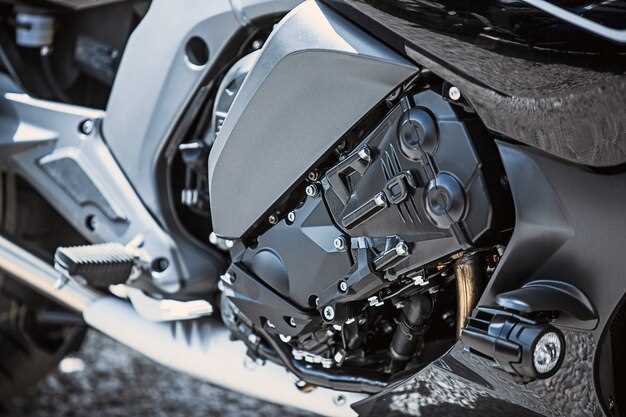
In the realm of automotive performance enhancements, aftermarket exhaust systems hold a prominent place among enthusiasts seeking to increase their vehicle’s speed and overall efficiency. Many vehicle owners are lured by the promise of improved horsepower and torque, as well as a more aggressive sound that enhances the driving experience. However, the real question remains: do these modifications genuinely translate into noticeable increases in speed?
Aftermarket exhaust systems typically aim to reduce backpressure and facilitate better exhaust flow from the engine. This is essential in maximizing engine performance, as waste gases are expelled more efficiently, which can lead to improved acceleration and throttle response. However, the extent of these benefits often varies based on factors such as the type of vehicle, engine configuration, and the quality of the aftermarket product.
It is also important to consider the holistic approach to vehicle performance. While an aftermarket exhaust can contribute to enhanced speed, it should ideally be part of a broader set of modifications that include engine tuning, intake upgrades, and more. Therefore, before making a decision, vehicle owners should research thoroughly, consult with experts, and weigh the potential gains against the costs and necessary adjustments to achieve optimal performance.
Understanding the Mechanics of Exhaust Flow and Performance

The flow of exhaust gases is a critical component of a vehicle’s overall performance. A well-designed exhaust system allows for the efficient expulsion of exhaust gases, which directly influences engine efficiency and power output. When the engine operates, it generates exhaust gases as a byproduct of combustion. These gases must be expelled quickly to reduce back pressure, which can hinder the engine’s performance.
Exhaust flow is influenced by several factors, including the diameter of the exhaust pipes, the design of the muffler, and the overall configuration of the exhaust system. Larger diameter pipes can reduce back pressure but may also lead to a decrease in exhaust gas velocity, which can adversely affect low-end torque. The balance between pipe diameter and gas velocity is crucial for optimizing engine performance at various RPM ranges.
The design of aftermarket exhaust systems often focuses on enhancing airflow. By using mandrel bends instead of traditional crushed bends, which can create turbulence and restrict flow, aftermarket systems promote smoother gas passage. Additionally, performance mufflers are engineered to minimize resistance while managing sound levels, allowing for improved exhaust flow without excessive noise.
Another aspect is the material used in exhaust construction. Stainless steel and other high-quality materials improve durability and resistance to corrosion, which can prolong the lifespan of the exhaust system and maintain performance over time. Furthermore, specialized designs like header systems can improve manifold efficiency by optimizing the way exhaust gases exit the engine, further enhancing performance.
Ultimately, understanding the mechanics of exhaust flow helps vehicle owners and enthusiasts make informed decisions when upgrading to aftermarket exhaust systems. Enhanced exhaust flow can lead to increased horsepower and torque, optimize fuel efficiency, and improve the overall driving experience. However, it is essential to consider how these modifications interact with other components of the vehicle to achieve the desired performance outcomes.
Key Factors That Influence Speed Increase with Aftermarket Exhausts

When considering the impact of aftermarket exhaust systems on vehicle speed, several key factors come into play. These elements significantly affect performance enhancement and should be understood to maximize potential benefits.
1. Exhaust Diameter: The diameter of the exhaust pipes directly influences the flow of exhaust gases. A larger diameter can reduce back pressure, allowing for quicker evacuation of exhaust gases. This increased flow can improve engine efficiency and result in greater horsepower, thus contributing to speed.
2. Material Quality: The construction material of aftermarket exhausts plays a crucial role. Stainless steel and titanium are popular choices due to their durability and resistance to corrosion. Higher quality materials can withstand higher temperatures, maintaining performance over time and enhancing speed capabilities.
3. Design Appropriateness: The design of the exhaust system, such as the arrangement of bends, mufflers, and resonators, affects airflow. A well-designed system minimizes restrictions and turbulence, optimizing performance. Systems designed for specific vehicle models typically provide the best results, as they align with the vehicle’s intended airflow patterns.
4. Engine Compatibility: An aftermarket exhaust must be compatible with the engine’s characteristics. Engines tuned for high performance can benefit more from exhaust upgrades, as these modifications complement their capabilities. Conversely, mismatched systems may not yield significant performance improvements.
5. Tuning: Integrating an aftermarket exhaust often necessitates engine tuning to make the most of the new system. Tuning adjusts fuel maps and ignition settings, ensuring that the vehicle operates efficiently with the modified exhaust. This can lead to notable gains in speed and responsiveness.
6. Weight Reduction: Many aftermarket exhaust systems are designed to be lighter than factory options. Reducing weight can enhance acceleration and overall speed, making it an important factor to consider when upgrading.
7. Back Pressure Management: Some aftermarket exhausts are engineered to maintain optimum back pressure levels. While reducing back pressure is beneficial, a balanced design is essential for maintaining torque and promoting speed without sacrificing engine performance.
In conclusion, selecting the right aftermarket exhaust involves understanding these key factors to maximize speed increases. Each factor interacts with the vehicle’s overall performance, making informed decisions critical for achieving the desired outcomes.
Comparing Performance Gains: Stock vs. Aftermarket Exhaust Systems
When evaluating the performance benefits of exhaust systems, it’s essential to understand the differences between stock and aftermarket options. Stock exhaust systems are designed primarily for compliance with regulations, optimizing noise levels, and ensuring durability. While they perform adequately for everyday driving conditions, they often restrict airflow, limiting the engine’s potential to generate power efficiently.
Aftermarket exhaust systems, in contrast, focus on enhancing performance through improved airflow, weight reduction, and a sportier sound. High-performance aftermarket options often utilize mandrel bends and larger diameter tubing, which helps decrease back pressure and allows exhaust gases to exit more quickly. This increase in efficiency can lead to noticeable gains in horsepower and torque.
The performance improvements can vary significantly based on the vehicle and the specific aftermarket system chosen. In many cases, drivers may experience an increase of 10% to 20% in horsepower and torque after installing a quality aftermarket exhaust. Additionally, these systems often offer a more aggressive exhaust note, appealing to those looking for enhanced driving experiences.
However, the benefits of an aftermarket exhaust system extend beyond just power gains. Many products are constructed from lighter materials like stainless steel or titanium, reducing the overall weight of the vehicle. This weight reduction, combined with improved airflow, can result in better acceleration and handling characteristics.
It’s important to note that enthusiasts should consider supporting modifications like tuning and intake upgrades to maximize the benefits of an aftermarket exhaust system. A holistic approach to performance modifications often yields the best results, as all components work in unison to enhance overall efficiency and speed.
In summary, while stock exhaust systems are designed for practicality and compliance, aftermarket exhausts are tailored for performance enhancement. Those seeking significant improvements in speed and responsiveness will likely find aftermarket options more beneficial, especially when combined with other performance modifications.
